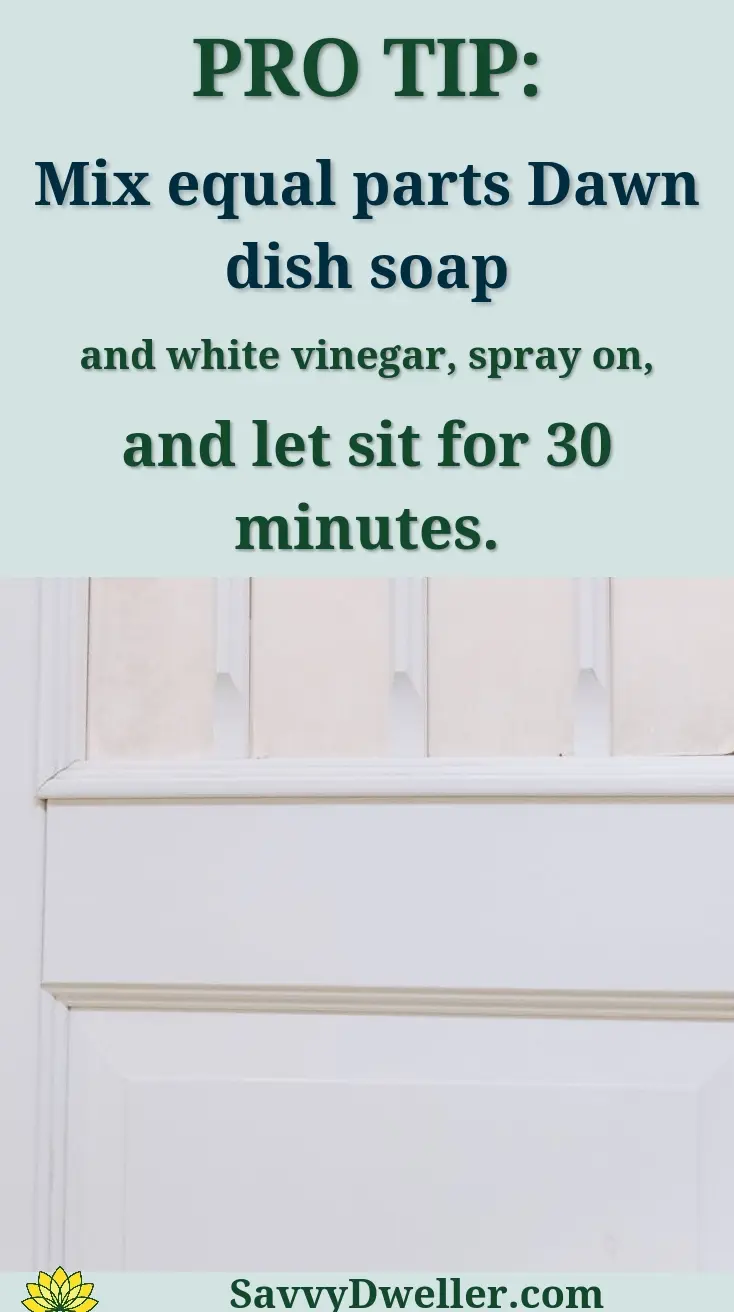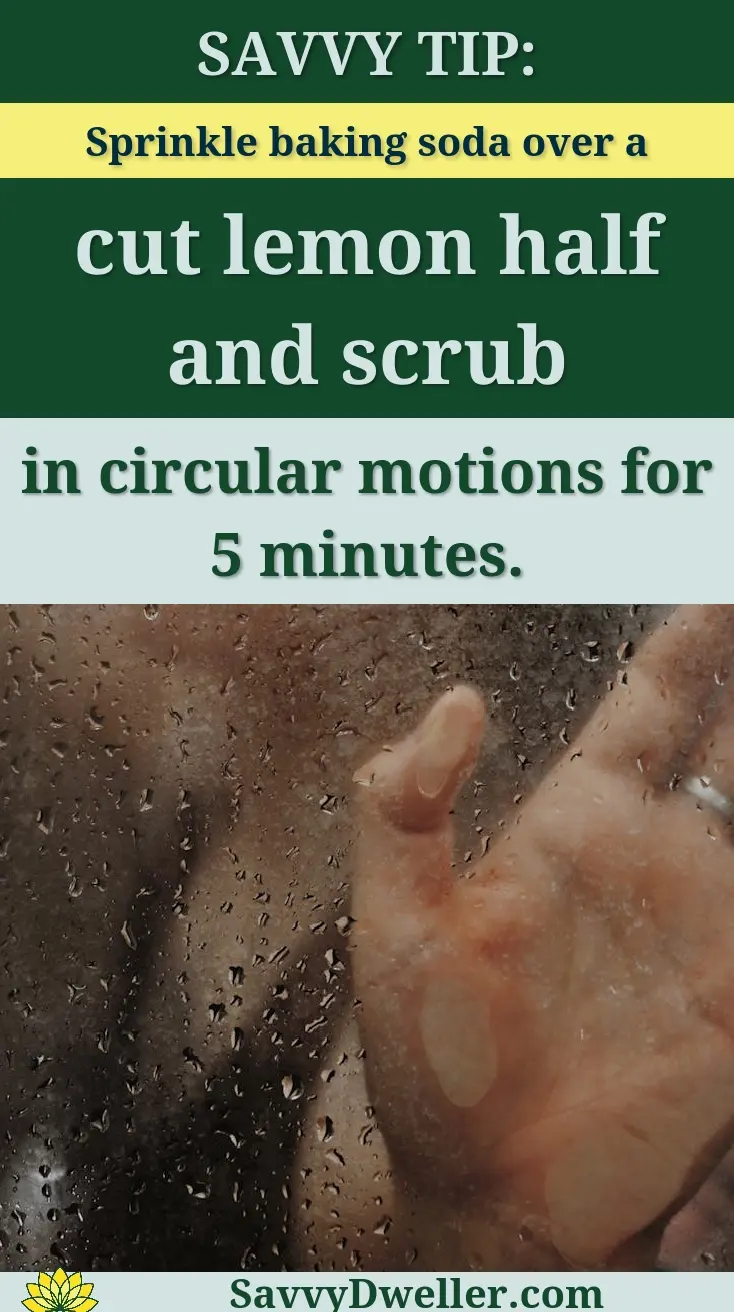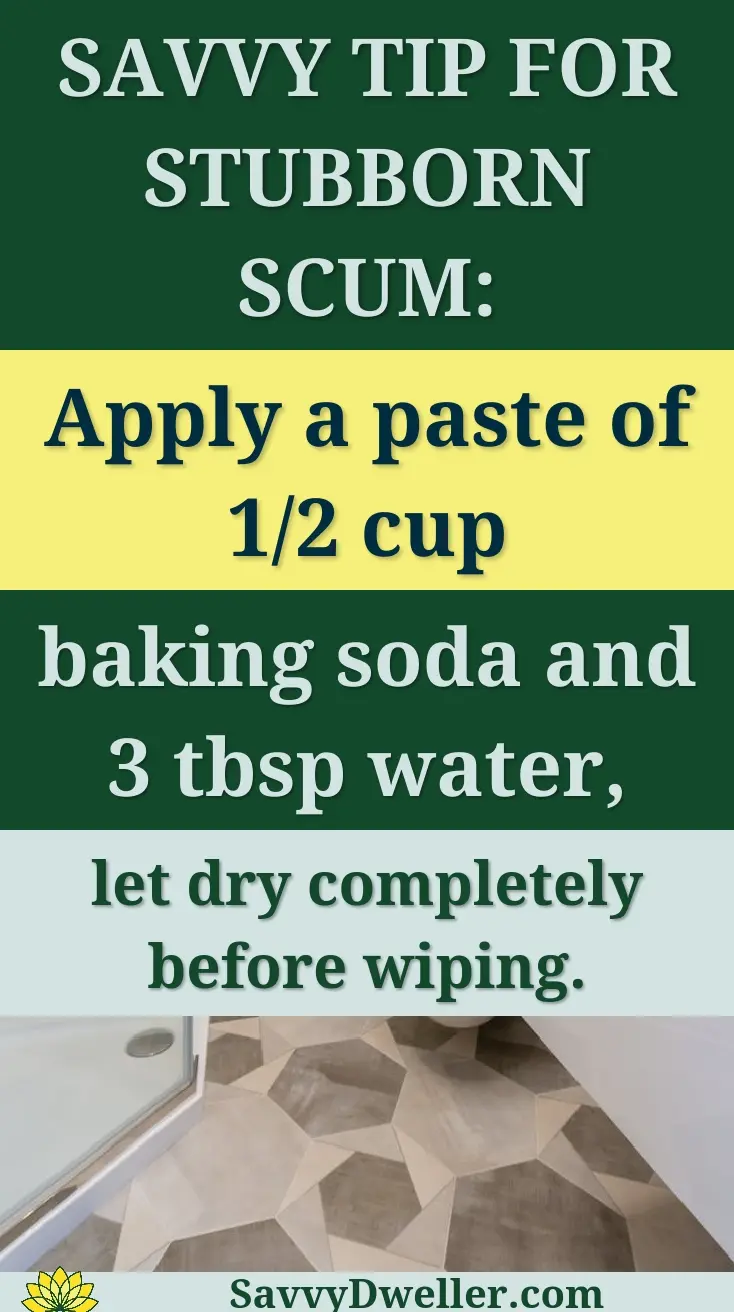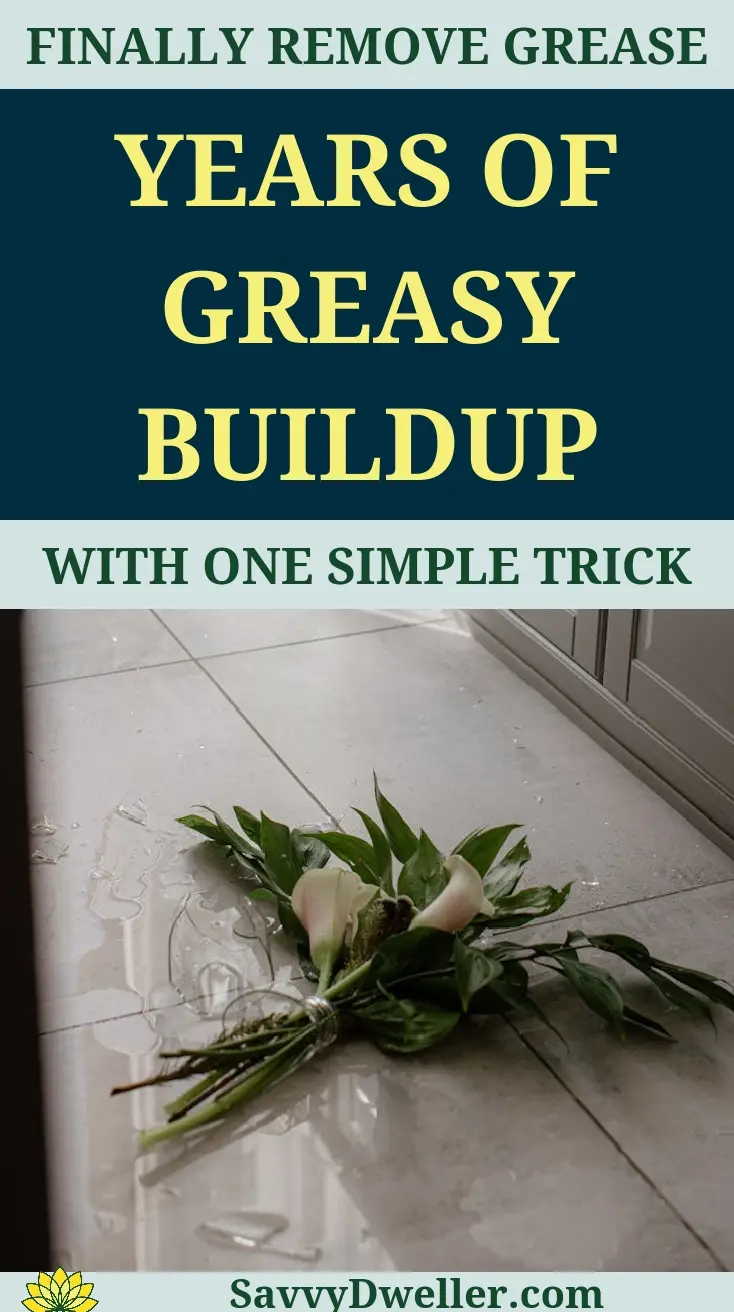The Definitive Guide to Removing Soap Scum From Shower Doors for Good
Staring at cloudy, grimy shower doors that make your bathroom look neglected no matter how much you scrub? That stubborn white film coating your glass doors isn’t just unsightly—it’s actually damaging the surface over time. You’ve probably tried countless store-bought cleaners and home remedies, only to watch the soap scum return within days.
This comprehensive guide cuts through the confusion with six proven methods that actually work long-term. We’ve tested these techniques extensively and found the specific combinations of ingredients and application methods that break down soap scum at the molecular level. You’ll get clear, step-by-step instructions plus the science behind why each method works, so you can choose the right approach for your specific situation and keep those doors crystal clear permanently.
Contents
- At a Glance: The Best Solutions
- 1. The Dawn and Vinegar Power Method
- 2. The Baking Soda Paste Technique
- 3. The Lemon and Salt Natural Scrub
- 4. The Commercial Cleaner Approach
- 5. The Dryer Sheet Hack
- 6. The Magic Eraser Method
- The Science Made Simple: Why Soap Scum Happens
- 5 Habits to Keep Soap Scum From Coming Back
- Frequently Asked Questions
- Your Crystal-clear Victory Awaits
At a Glance: The Best Solutions
You’ve tried scrubbing with regular cleaners, but that stubborn soap scum on shower doors keeps coming back stronger than ever. The good news? We’ve tested every method out there and found six proven techniques that actually work.
Each approach targets soap scum differently, so you can choose based on what you have at home and how severe your buildup is. Some methods work fast for light films, while others tackle years of accumulated grime.
The Dawn and Vinegar Power Method delivers the most consistent results across all soap scum types, making it our top recommendation. However, if you prefer natural ingredients, the Lemon and Salt Natural Scrub works beautifully on glass surfaces.
For those dealing with extremely stubborn buildup, combining the Baking Soda Paste Technique with the Magic Eraser Method creates a one-two punch that dissolves even the thickest layers. Commercial cleaners offer convenience but require proper ventilation and safety precautions. A natural alternative involves using baking soda and vinegar, which can effectively tackle tough oven grime. This method is part of the ultimate guide to cleaning your oven with baking soda and vinegar, providing a safe and effective way to restore your appliance.
The surprising winner for maintenance cleaning? Dryer sheets contain fabric softening agents that actually prevent soap scum from adhering to glass, making future cleaning sessions much easier.
Pick the method that matches your comfort level with ingredients, time availability, and severity of soap scum buildup. Most importantly, whichever technique you choose, consistency in application makes all the difference between temporary fixes and long-lasting results.
1. The Dawn and Vinegar Power Method
How It Works
Dawn dish soap cuts through greasy soap scum buildup while white vinegar dissolves mineral deposits and hard water stains. This combination creates a powerful one-two punch that tackles both the oily and mineral components of soap scum on shower doors.
The surfactants in Dawn break down soap residue at the molecular level. Meanwhile, the acetic acid in vinegar works to dissolve calcium and magnesium deposits that make scum so stubborn.
What You’ll Need
- 1/2 cup Dawn dish soap (original blue formula works best)
- 1/2 cup white vinegar
- Empty spray bottle
- Microfiber cloth or soft sponge
- Squeegee or dry towel
Step-by-step Instructions
For Light to Moderate Soap Scum
- Heat the vinegar in your microwave for 30 seconds to boost its cleaning power.
- Mix the warm vinegar with Dawn in your spray bottle, swirling gently to combine.
- Spray the solution generously on soap scum areas, covering every inch of buildup.
- Let the mixture sit for 15-20 minutes to penetrate the scum.
- Scrub gently with a microfiber cloth using circular motions.
- Rinse thoroughly with warm water and squeegee dry to prevent water spots.
For Heavy Buildup
- Apply the Dawn and vinegar mixture as described above.
- Cover the treated area with plastic wrap to prevent the solution from drying out.
- Allow 45 minutes to 1 hour for maximum penetration of stubborn soap scum.
- Remove plastic wrap and scrub with a soft-bristled brush in gentle circular motions.
- For extra tough spots, sprinkle a small amount of baking soda on your cloth before scrubbing.
- Rinse completely and dry with a squeegee to reveal your sparkling clean shower doors.

2. The Baking Soda Paste Technique
How It Works
Baking soda acts as a mild abrasive that physically scrubs away soap scum without scratching glass surfaces. Its alkaline nature neutralizes acidic soap residue while providing just enough grit to remove stubborn buildup. This versatile ingredient can be used in many unexpected ways beyond just cleaning glass. In fact, there are 53 clever ways to clean almost everything with baking soda, showcasing its effectiveness in tackling a wide range of cleaning tasks.
This method works particularly well for textured glass doors where soap scum gets trapped in grooves and patterns.
What You’ll Need
- 1/2 cup baking soda
- 2-3 tablespoons water
- Small mixing bowl
- Soft-bristled toothbrush or scrub brush
- Microfiber cloth
- Spray bottle with water for rinsing
Step-by-step Instructions
Creating the Perfect Paste Consistency
- Pour baking soda into your mixing bowl.
- Add water one tablespoon at a time, stirring after each addition.
- Stop when you achieve a thick, spreadable consistency similar to toothpaste.
- The paste should stick to vertical surfaces without dripping off.
Application for Stubborn Areas
- Apply the baking soda paste directly to soap scum areas using your fingers or a cloth.
- Focus on the heaviest buildup areas, creating a generous layer of paste.
- Let the paste sit for 10-15 minutes to soften the scum.
- Scrub gently with your soft-bristled brush using small circular motions.
- Pay extra attention to corners and edges where soap scum tends to accumulate.
- Rinse thoroughly with warm water, ensuring all baking soda residue is removed.
- Dry completely with a clean microfiber cloth to prevent water spots.
Also See: The Ultimate Guide to Cleaning Dirty Tile Grout
3. The Lemon and Salt Natural Scrub
How It Works
Fresh lemons contain citric acid that naturally dissolves mineral deposits and soap residue. Salt provides gentle abrasive action that helps scrub away buildup without damaging your shower doors.
This eco-friendly approach leaves your bathroom smelling fresh while effectively removing soap scum from glass shower doors.
What You’ll Need
- 2 fresh lemons
- 1/4 cup coarse sea salt or kosher salt
- Small bowl
- Cut lemon halves for scrubbing
- Microfiber cloth
- Warm water for rinsing
Step-by-step Instructions
Best Technique for Glass Doors
- Cut your lemons in half and squeeze the juice into a small bowl.
- Mix the lemon juice with salt to create a slightly chunky paste.
- Dip the cut side of a lemon half into the salt mixture.
- Rub the salted lemon directly onto soap scum areas using firm, circular motions.
- The lemon’s natural oils and salt will work together to break down stubborn buildup.
- For extra cleaning power, let the lemon juice sit on heavily soiled areas for 5-10 minutes.
- Rinse thoroughly with warm water to remove all salt and lemon residue.
- Buff dry with a microfiber cloth for a streak-free, sparkling finish.
4. The Commercial Cleaner Approach
How It Works
Commercial soap scum removers pack powerful surfactants and acids that break down mineral deposits and soap residue faster than homemade solutions. These formulations specifically target the calcium and magnesium compounds that create that stubborn white film on your shower doors. Maintaining the cleanliness of your bathroom surfaces is essential, and understanding how to effectively remove soap scum can make a significant difference. A guide on removing soap scum from bathroom tiles and tubs can provide you with effective methods to keep your space sparkling clean.
Most commercial cleaners use either citric acid or phosphoric acid as their active ingredient. These acids dissolve the alkaline soap scum while specialized detergents lift away the loosened particles.
What You’ll Need
- Commercial soap scum remover (see recommendations below)
- Rubber gloves
- Microfiber cloths
- Non-abrasive sponge
- Squeegee
- Ventilation fan or open window
Top-Rated Commercial Soap Scum Removers
CLR (Calcium, Lime & Rust) consistently outperforms other brands for heavy soap scum buildup. Its unique formula tackles multiple types of mineral deposits simultaneously.
Scrubbing Bubbles Bathroom Grime Fighter works exceptionally well on glass surfaces without leaving streaks. Lime-Away offers excellent value while maintaining professional-grade cleaning power. For achieving that perfect shine, creating a DIY glass cleaner can also be an effective solution. A simple recipe can ensure a streak-free finish on your windows and mirrors.
Kaboom Shower, Tub & Tile Cleaner provides foam action that clings to vertical surfaces longer than liquid cleaners.
Safety Considerations
Always wear rubber gloves when using commercial cleaners to protect your skin from chemical burns. These products contain acids that can irritate sensitive skin and eyes.
Ensure proper ventilation before starting. Open windows or run your bathroom exhaust fan to prevent inhaling concentrated fumes.
Never mix commercial cleaners with other products, especially bleach or ammonia-based solutions. This combination can create dangerous gases.
Step-by-step Instructions
- Put on rubber gloves and ensure adequate ventilation in your bathroom.
- Spray the commercial cleaner generously across the entire soap scum-affected area.
- Allow the product to sit for the manufacturer’s recommended time (typically 3-5 minutes).
- Use a non-abrasive sponge to gently scrub in circular motions, starting from the top.
- For stubborn spots, apply additional cleaner and let it work for another 2 minutes.
- Rinse thoroughly with warm water, ensuring all cleaner residue is removed.
- Dry immediately with a microfiber cloth to prevent water spots.
- Use a squeegee for the final touch to achieve streak-free results.

5. The Dryer Sheet Hack
How It Works
Used dryer sheets contain fabric softening agents that break down soap scum while simultaneously preventing future buildup. The anti-static properties in these sheets repel soap particles, creating a protective barrier on your shower doors.
This method works particularly well because the softening agents dissolve the binding compounds in soap scum without harsh scrubbing.
What You’ll Need
- Used dryer sheets (3-4 sheets)
- Warm water
- Spray bottle
- Clean microfiber cloth
- Squeegee
Step-by-step Instructions
- Dampen the used dryer sheet with warm water until it’s thoroughly wet but not dripping.
- Gently rub the dryer sheet across the soap scum in small, overlapping circles.
- Focus on areas with heavier buildup, applying slightly more pressure.
- Allow the softening agents to work for 2-3 minutes on stubborn spots.
- Rinse the entire door with warm water to remove loosened soap scum.
- Wipe dry with a microfiber cloth, then squeegee for optimal clarity.
- Dispose of the used dryer sheet after cleaning.
Why This Method Works So Well
Dryer sheets contain quaternary ammonium compounds that neutralize the minerals in soap scum. These same compounds create an invisible film that makes future soap scum removal significantly easier.
The anti-static properties also reduce the electrostatic attraction between soap particles and glass surfaces. This means soap and shampoo residue slides off more readily during regular rinsing.
Unlike abrasive scrubbing methods, dryer sheets clean without creating microscopic scratches that can trap more soap scum over time.
6. The Magic Eraser Method
How It Works
Magic erasers contain melamine foam, which acts like ultra-fine sandpaper that removes soap scum through gentle micro-abrasion. The foam’s unique structure creates millions of tiny cleaning surfaces that lift away stubborn residue.
This method physically removes soap scum rather than dissolving it chemically, making it highly effective for thick, calcified buildup.
What You’ll Need
- Magic eraser (melamine foam sponge)
- Warm water
- Microfiber cloth
- Squeegee
- Rubber gloves (optional but recommended)
Step-by-step Instructions
- Dampen the magic eraser with warm water and squeeze out excess moisture.
- Test the eraser on a small, inconspicuous area first to ensure compatibility.
- Gently rub the damp eraser across soap scum using light, consistent pressure.
- Work in small sections, rinsing the eraser frequently to remove accumulated residue.
- For thick buildup, make multiple gentle passes rather than applying heavy pressure.
- Rinse the entire door thoroughly with warm water.
- Dry immediately with a microfiber cloth and finish with a squeegee.
When to Use This Method
Magic erasers work best on heavily calcified soap scum that resists chemical cleaners. This method shines when dealing with years of accumulated buildup that creates a thick, white coating. Additionally, magic erasers can be incredibly effective when combined with hydrogen peroxide for laundry. Exploring this duo reveals 15 surprising uses that can elevate your cleaning routine.
Use this approach for spot-treating particularly stubborn areas after trying gentler methods first. It’s also excellent for removing water spots and mineral deposits alongside soap scum.
Precautions for Different Door Types
Never use magic erasers on textured or frosted glass surfaces, as the abrasive action can damage the finish. The micro-abrasion will smooth out intentional textures and create permanent cloudiness.
For tempered glass doors, use minimal pressure and test thoroughly before full application. Some lower-quality tempered glass may show scratching with repeated use.
Avoid using magic erasers on shower doors with protective coatings or films, as the abrasive action will remove these treatments permanently.
The Science Made Simple: Why Soap Scum Happens
The Chemistry Behind Soap Scum Formation
Soap scum isn’t actually soap at all. It’s a sticky film that forms when soap particles react with minerals in your water, creating insoluble compounds that cling to surfaces like shower doors.
Traditional bar soaps contain fatty acids that bind with calcium and magnesium ions in water. This chemical reaction produces what we call soap scum – those white, chalky deposits that seem impossible to scrub away.
The reaction happens instantly every time you shower, which explains why soap scum on shower doors builds up so quickly. Body oils, dead skin cells, and dirt particles get trapped in this sticky matrix, making the buildup even thicker and more stubborn over time.
Hard Water Vs. Soft Water Impact
Hard water contains high levels of dissolved minerals like calcium and magnesium. If your water is hard, you’ll notice soap scum from shower doors appearing much faster and thicker than in homes with soft water.
Soft water has fewer minerals, so soap rinses away more easily. However, even soft water homes aren’t completely immune to soap scum formation – it just takes longer to become noticeable.
You can test your water hardness with inexpensive strips from hardware stores to understand why your soap scum cleaning efforts might be more challenging. Areas with very hard water may see soap scum buildup within just a few days of cleaning.
Why Some Soaps Create More Scum Than Others
Traditional bar soaps are the biggest culprits for soap scum on shower doors. These soaps contain tallow or other animal fats that readily combine with water minerals to form stubborn deposits.
Liquid body washes and synthetic detergent bars create significantly less scum because they’re formulated differently. They contain surfactants that rinse away more completely, leaving fewer particles to react with minerals.
Glycerin-based soaps and castile soaps also produce less soap scum, making them better choices if you’re tired of constantly removing soap scum from glass shower doors. The trade-off is that these alternatives might not lather as richly as traditional soaps.
5 Habits to Keep Soap Scum From Coming Back
Daily Squeegee Routine
A daily squeegee routine is your most powerful weapon against soap scum shower doors. This simple 30-second habit prevents water droplets from drying and leaving mineral deposits behind.
Start at the top of your shower door and pull the squeegee down in overlapping strokes, wiping the blade clean after each pass. Focus on the areas where soap scum typically builds up first – usually the bottom third of the door and corners.
Keep your squeegee hanging in the shower for easy access. If you make this part of your post-shower routine, you’ll drastically reduce the frequency of deep soap scum cleaning sessions.
Weekly Prevention Sprays
Prevention sprays create a protective barrier that makes it harder for soap particles and minerals to stick to your shower doors. Apply these sprays once a week after your regular cleaning routine.
Mix equal parts white vinegar and water in a spray bottle for an effective homemade prevention spray. Commercial rain-repelling products designed for car windshields also work excellently on glass shower doors.
Spray the solution on clean, dry shower doors and buff with a microfiber cloth to create an invisible coating that repels water and soap residue. This weekly habit can cut your deep cleaning time in half.
Choosing the Right Soap Products
Switching to liquid body washes or synthetic detergent bars can dramatically reduce soap scum formation. These products rinse cleaner and leave fewer particles to combine with water minerals.
Look for body washes labeled as “soap-free” or “non-comedogenic” – these formulations are specifically designed to rinse away completely. Avoid products with heavy moisturizers or oils, which can contribute to buildup.
If you prefer bar soap, choose glycerin-based or castile varieties that produce minimal scum while still providing effective cleaning. The investment in better soap products pays off in reduced cleaning time and effort.
Proper Ventilation Techniques
Good ventilation helps water evaporate quickly, preventing soap particles from settling and hardening on your shower doors. Run your exhaust fan during showers and for at least 30 minutes afterward.
If your bathroom doesn’t have an exhaust fan, crack the door and window slightly to create airflow. Stagnant, humid air gives soap scum more time to form and stick to surfaces.
Clean your exhaust fan every few months to ensure it’s working efficiently – a clogged fan won’t remove humidity effectively. Proper ventilation also prevents mold and mildew, creating a healthier bathroom environment overall. Regular maintenance of bathroom fixtures, including exhaust fans, is key in keeping your space fresh. The best way to clean a bathroom exhaust fan involves removing dust and grime with a damp cloth and ensuring that it is free from any obstructions for optimal airflow.
Monthly Deep-clean Schedule
Even with daily maintenance, plan for a monthly deep-clean to address any soap scum that manages to build up. This proactive approach prevents heavy buildup that requires harsh chemicals or extensive scrubbing.
Use your preferred soap scum removal method during these monthly sessions, paying special attention to corners, door tracks, and hardware where buildup tends to hide. This is also the perfect time to clean your squeegee and replace prevention sprays.
Mark your calendar for these monthly sessions – consistent maintenance is far easier than dealing with months of accumulated soap scum on shower doors. A 15-minute monthly deep-clean beats hours of scrubbing stubborn buildup later.

Frequently Asked Questions
Is It Safe to Use Acidic Cleaners Like Vinegar on Shower Doors With Metal Frames or Other Materials?
Acidic cleaners such as vinegar are highly effective on glass, but they can cause damage to certain materials. For metal frames, hinges, or hardware, prolonged exposure to acid can lead to corrosion or discoloration. Always avoid applying vinegar directly to these parts, and rinse immediately if contact occurs.
For non-glass surfaces like plastic or acrylic, test a small area first. Opt for pH-neutral alternatives like baking soda paste for sensitive materials to ensure safe cleaning without risking harm.
What is the Best Way to Prevent Streaks on Shower Doors After Cleaning?
To avoid streaks, always dry the glass thoroughly with a microfiber cloth immediately after rinsing off the cleaner. Microfiber is lint-free and absorbs moisture quickly, preventing water spots. For an extra shine, use a squeegee in a vertical motion to remove excess water before drying.
Additionally, finish with a quick spritz of rubbing alcohol diluted with water (equal parts) and wipe dry. This helps evaporate any remaining moisture and leaves a streak-free surface without residue.
How Can I Effectively Clean the Tracks and Hinges Of My Shower Door?
For tracks and hinges, start by removing loose debris with an old toothbrush or a vacuum attachment. Then, apply a paste of baking soda and water to scrub away grime; its abrasive nature works well in tight spaces. For stubborn buildup, let the paste sit for 10-15 minutes before scrubbing.
Rinse thoroughly with warm water and dry completely to prevent rust. For metal hinges, avoid acidic cleaners and use a mild soap solution instead, followed by a light lubricant like silicone spray to ensure smooth operation.
What Should I Do if I Have Both Soap Scum and Mold on My Shower Doors?
When dealing with combined soap scum and mold, tackle the mold first with a targeted approach. Use a solution of one part hydrogen peroxide to two parts water, spray it on the affected areas, and let it sit for 10 minutes to kill mold spores. Scrub gently with a soft brush. To keep your living space safe and healthy, remove mold and mildew naturally using household ingredients. Natural methods not only eliminate mold but are also safer for your home and family.
After addressing the mold, proceed with a soap scum removal method like the Dawn and vinegar spray. Ensure proper ventilation during cleaning and wear gloves to protect your skin. Always rinse well and dry the surface to prevent regrowth.
Your Crystal-clear Victory Awaits
You now have six proven methods to tackle even the most stubborn soap scum buildup on your shower doors. These techniques work because they target the mineral deposits and soap residue at their core, breaking down the bonds that make scum so persistent. Whether you prefer the natural power of dawn and vinegar or the convenience of commercial cleaners, you have options that fit your cleaning style and budget.
The key to lasting results lies in combining the right removal method with consistent prevention habits. By implementing just one or two of the prevention strategies we’ve covered, you’ll cut your deep-cleaning time in half and keep those doors sparkling longer. Remember, a quick daily squeegee beats hours of scrubbing later.
Ready to transform your shower experience? Pick the method that speaks to you and give it a try this weekend. For more home solutions that actually work, explore Savvy Dwelling where we test and share the most effective tips for every corner of your home. Your future self will thank you every time you step into that crystal-clear shower.


